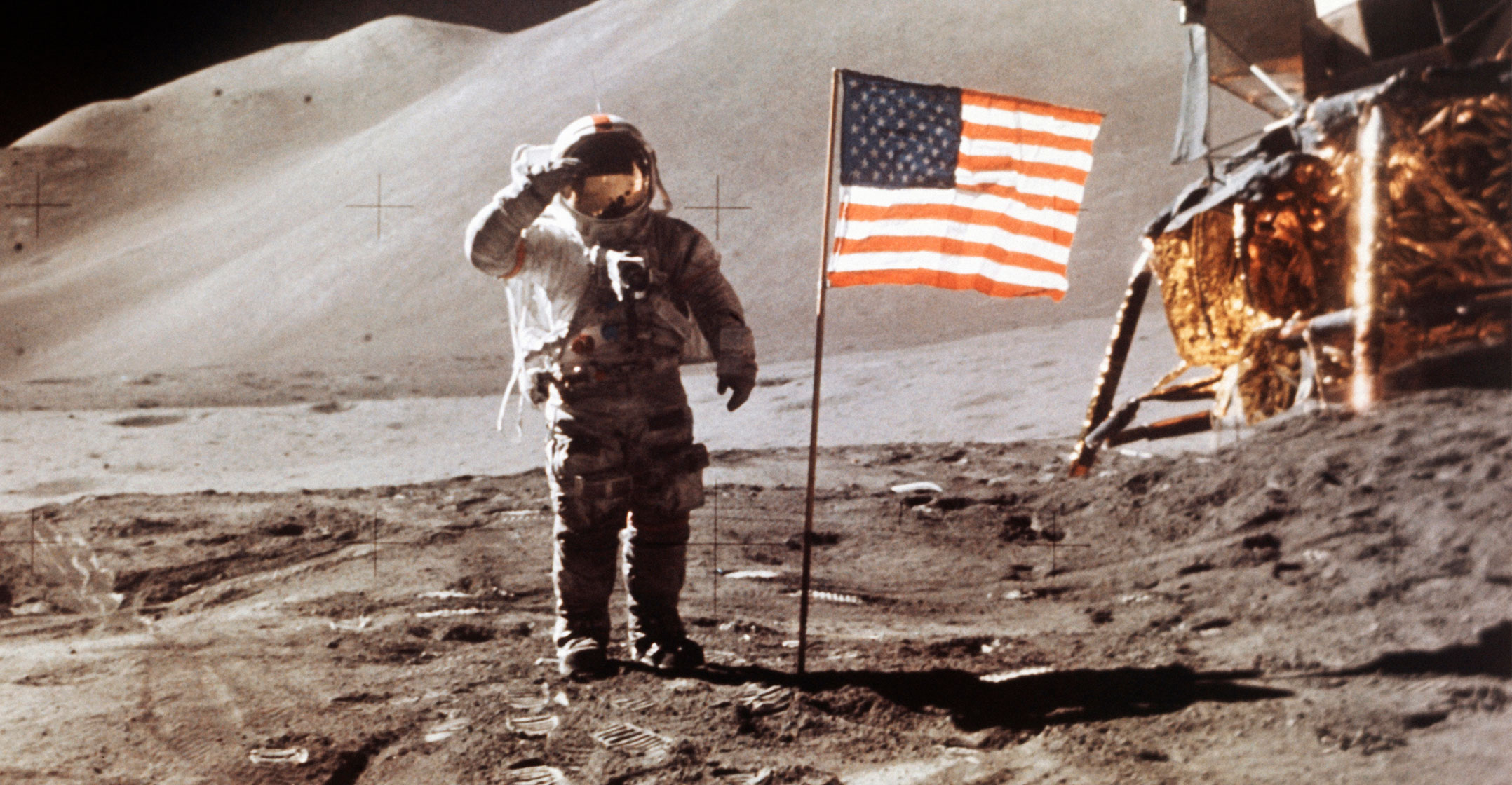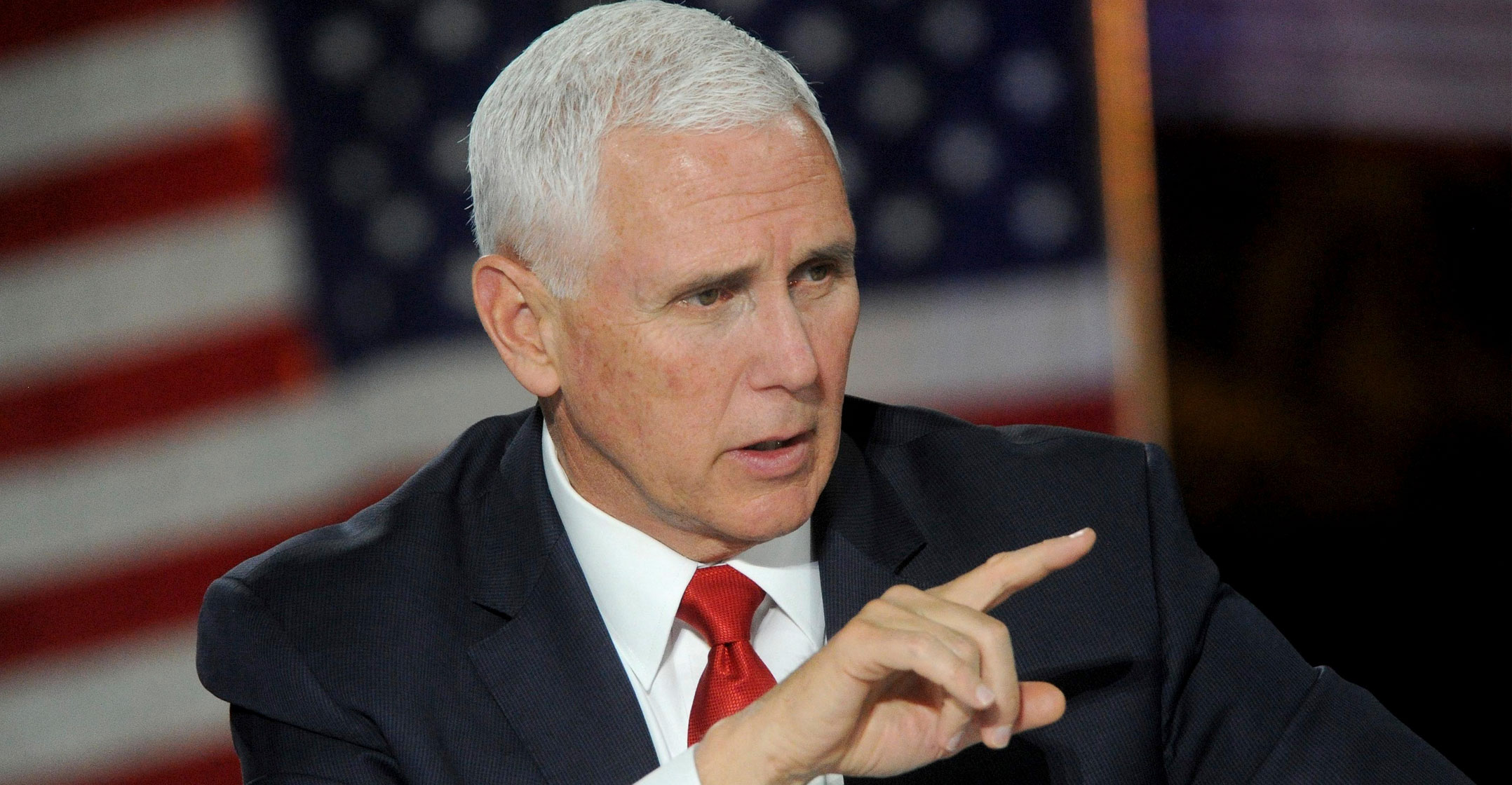
US Vice President Mike Pence has called for American astronauts to return to the moon within five years. Pence is calling for an accelerated pace by the US space agency Nasa towards the goal of putting Americans on the lunar south pole.
He said Nasa needs to achieve this outcome “by any means necessary”.
Speaking at a meeting of the National Space Council in Huntsville, Alabama, he said Nasa rockets and lunar landers will be replaced by private craft, if required.
“It’s time to redouble our effort. It can happen, but it will not happen unless we increase the pace,” he said.
The earliest possible landing on the moon by Nasa is not until 2028, Pence said, acknowledging that talent — and money — will be necessary to achieve this sooner.
Pence warned that if Nasa cannot put astronauts on the moon by 2024, “we need to change the organisation, not the mission”.
He said the US space agency must transform into a leaner, more accountable and more agile organisation, and must adopt an “all-hands-on-deck approach”.
Nasa administrator Jim Bridenstine assured Pence that Nasa will do everything possible to meet the deadline. However, some outside experts were sceptical of the new timeline.
‘Will be astonished’
Jonathan McDowell, of the Harvard-Smithsonian Centre for Astrophysics in Cambridge, Massachusetts, said: “I will be astonished if this happens.”
He noted that a lunar lander still needs to be designed, built and tested. “That is a hard challenge on a five-year time scale even without political budget infighting,” he said.
This northern hemisphere summer marks the 50th anniversary of the first manned moon landing. Since Apollo astronauts last walked on the moon in 1972, no country has made a serious attempt to send humans back to the lunar surface.

For decades, Nasa has switched focus back and forth from the moon to Mars, a victim of changing presidential administrations. More recently, former President Barack Obama targeted Mars as astronauts’ next big destination, while his successor at the White House, Donald Trump, has favoured the moon.
To get astronauts on the moon by 2024, Bridenstine said the space agency’s new mega rocket will be needed, but its development and pace will need to be faster.
Two weeks ago, he said Nasa was considering using private rockets instead to launch its new Orion capsule around the moon without a crew on a test flight next year.
However, he expressed confidence that the SLS, or Space Launch System, would be ready for the job. He also stressed the need for an outpost with astronauts near the moon to serve as a stepping-off point for lunar landings. It took just eight years for Nasa to accomplish everything to put astronauts on the moon in July 1969. It is unacceptable, Pence said, that SLS delays and cost overruns point to a 2028 target date — two decades after the SLS programme began.
The vice president instructed Nasa to aim to land on the moon’s south pole, where considerable amounts of ice could be used for drinking and making rocket fuel.
‘Americans lead’
The US vice president declared: “The exploration of the heavens in this still new century will go forward with or without the United States. But Americans don’t do second place. Americans lead, and so we will.”
Planetary scientist Alan Stern, of the Southwest Research Institute, said 2024 is a feasible target — provided the accelerated effort is funded properly and commercial space systems are fully embraced.
However, former Nasa official Scott Hubbard said the five-year time limit seems “awfully short to me”, given the lack of national security incentives like the ones that existed during Apollo and the Cold War race to beat the Soviets to the moon.




